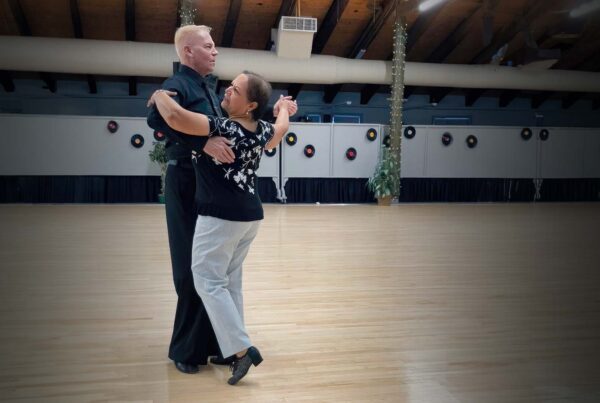Arnold van Gennep, a French ethnographer (someone who studies people and cultures), is recognized for coining the term “liminality” or “liminal space.”
According to van Gennep, liminal space is the disorienting experience of transition between two meaningful events. When someone enters into liminal space, he writes, they stand at the threshold of transformation between who they were and who they are becoming, which then provides the opportunity to shape and direct the person they want to become.
Liminal space isn’t always the result of something we chose to do. Sometimes, as when we reach key milestones of aging, or encounter a debilitating injury or the loss of a job, it is thrust upon us. But in every case, how we look at it affects our growth.
In other words, it is during the times of disorientation, uncertainty, and transition that we are best able to make significant changes in our lives for the better. However, in order to do this, we must first see liminal spaces as opportunities rather than difficult times we need to avoid or escape.
Concept of Liminal Space
The word “liminal” comes from the Latin word limens, meaning literally, “threshold.” Van Gennep invented the term liminality in his 1909 book Rites de Passage. Van Gennep began his book by identifying the various categories of phases we go through in learning and life. He distinguished between those that result in a change of status for an individual or social group, and those that signify transitions in the passage of time. In doing so, he placed a particular emphasis on rites of passage, and identified a specific three-fold sequential structure that we go through.
- Phase 1: This stage involves a metaphorical “death” to your old way of life, as you leave something behind by breaking with previous practices and routines.
- Phase 2: Liminal rites (or transition rites): This involves “the creation of a tabula rasa, through the removal of previously taken-for-granted forms and limits.” As we adapt to the transition we throw away old habits and patterns, replacing them with new ones. This is only possible when the end result is something that has clear rules or guidelines, so you know how it can or should look when you arrive at your destination skill or knowledge.
- Phase 3: Postliminal rites (or rites of incorporation): During this stage, you are able to see yourself as having arrived at your new identify, confident in who you are and what you can now do or in what you now know.
By constructing this three-part sequence, van Gennep identified a pattern he believed was inherent in all passages of learning to adapt to new experiences or life transitions.
How this relates to dance
Every dancer goes through this liminality experience when first learning to dance. Some are afraid. I’ve often spoken to people, men particularly, who are so frightened of the disorientation they know they’ll experience in the first phase that they reject dancing outright and never even try to learn.
Others embrace it. These are often people who embrace change in general. They see learning as a key part of human development. Most people find in liminal space a combination of fear and excitement.
The most memorable example in my life was when I worked with Mary Zilba, an actress on the television show “Real Housewives of Vancouver,” for her performance in Dancing with the Stars: the Vancouver Experience. Like most celebrities, she embraced the new opportunity and could not even imagine being anything but exceptional. This was in sharp contrast to the average new dancer who is more likely to see themselves as failing and consequently becomes hard to teach. Mary not only learned in a ridiculously short time period but also sold her live performance with a level of confidence that was spectacular.
The more you can let go of the fear component and convert the fear/excitement ratio to the side of enthusiasm, the more you grow as a dancer.
Every dancer goes through this liminality experience when first learning to dance. Some are afraid. Others embrace it.
Think back to your first experience learning to dance. At the beginning we stand on the outside, looking in at this new skill that we know nothing about. We enter into it by taking up our first dance class. It can be uncomfortable and disorienting. Stumbling through dance steps that feel awkward and confusing at first can leave people just wanting out to avoid that feeling of discomfort. There is so much to learn. It can seem overwhelming.
Beginners often sit on the sidelines during social ballroom dance sessions, feeling intimidated by those who are out on the floor and who appear to know what they’re doing. Yet the fact is that every person on that floor was once in the same phase of liminality. It may have been many years ago or within the past year, but they were all there.
When we stay with our dance training and apply what we know to practice, things become more comfortable. We begin to understand the patterns and rules. Some rules in dancing apply everywhere. Confidence grows as these elements are mastered. Eventually, we begin to understand the principles that make dance look good. With continued effort, we reach phase 3 where we know that we really can dance. This is where dancers really blossom.
Not always a successful journey
Unfortunately, some dancers never seem to get out of phase 1. They never see themselves as having achieved any level of skill, even after decades of hard work. Some become so inwardly focused on minutiae that they get worse over time rather than better. I watch competitors, sometimes even those dancing at the championship level with many years of experience, who lack any confidence in themselves and literally fall apart on the competition floor. You can see them thinking so hard their brain looks as if it will pop out of their head any moment, sending gears and springs bouncing all over the floor.
I believe that the dance community is at least a little responsible for this problem. Students take lessons regularly, acutely aware that they need more knowledge to achieve their goals. Teachers can focus so strongly on technical details that students are permanently stuck in phase 1 of liminal space, never allowed to feel that they are moving forward. If instructors understand liminal space they can look at the learning process objectively and focus more on the experience of embracing their student’s new identity as quality dancers.
Dancers continually enter new phases such as learning a new dance, entering the competitive environment or transitioning from amateur to professional. New liminal spaces are encountered throughout the experience. No matter where you are in the liminal space of dance, embrace the opportunities and focus on the outcome. It’s the best way to grow.













